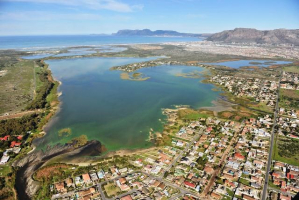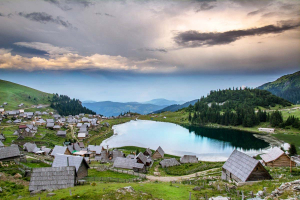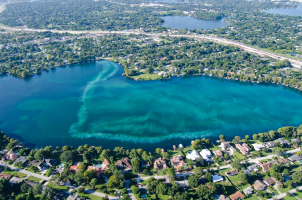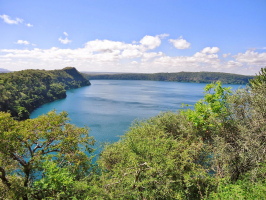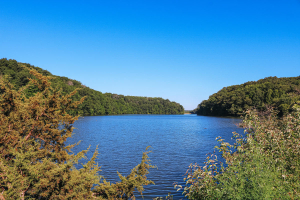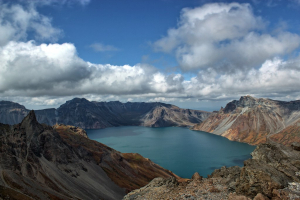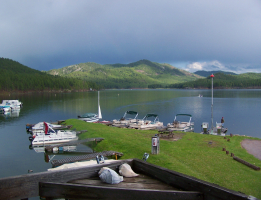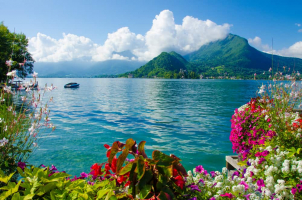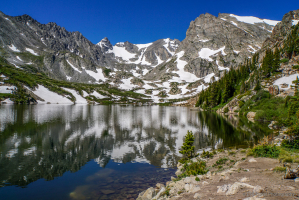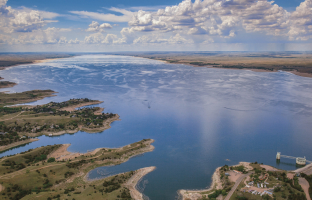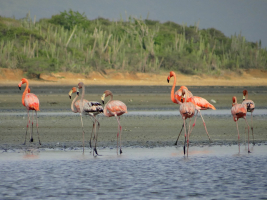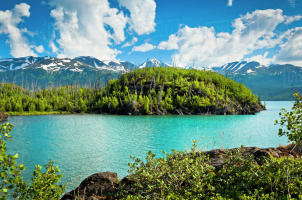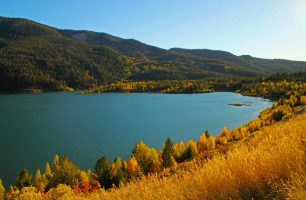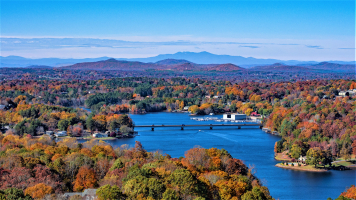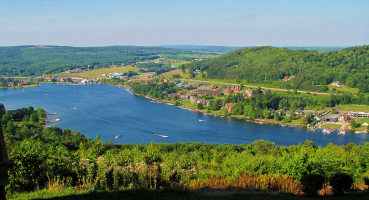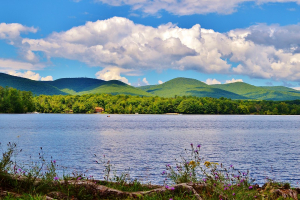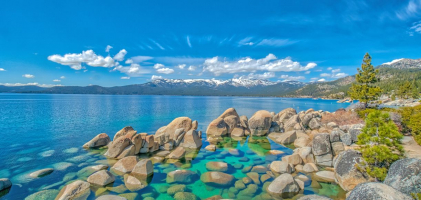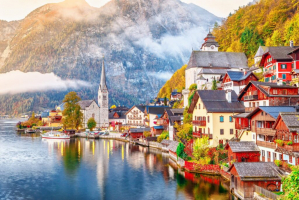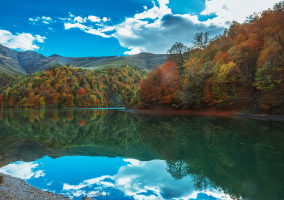Top 13 Best Lakes To Visit in Africa
The lakes are the ideal summer destination for those who want a place to relax and cool off without descending to cramped beach destinations. In a vast region ... read more...in Africa, there is no shortage of beautiful lakes. Let's join Toplist to discover the best lakes to visit in Africa!
-
One of the Great Lakes of Africa is Lake Victoria which is one of the best lakes to visit in Africa. With a surface area of roughly 59,947 km2, Lake Victoria is the largest freshwater lake in the world by surface area, the largest tropical lake, and the largest lake in Africa. Lake Superior in North America is the largest freshwater lake by surface area. One of the world's most densely inhabited areas, Lake Victoria is essential to the sustenance of the millions of people that live nearby.
Numerous species of fauna are supported by Lake Victoria. The hippopotamus, the marsh mongoose, and the giant otter shrew are just a few of the many mammal species that call the area around Lake Victoria home. In addition, it is home to numerous crustaceans, including four different species of freshwater crab, as well as reptiles like the African helmeted turtle and the Nile crocodile.
On its northern flank, in Uganda, the Nile River serves as its sole point of drainage. But the eastern part of it, close to Kenya, is where it is deepest. Ferries carrying people and cars travel over the lake between the three nations.
Location: African Great Lakes, Kenya, Tanzania, Uganda
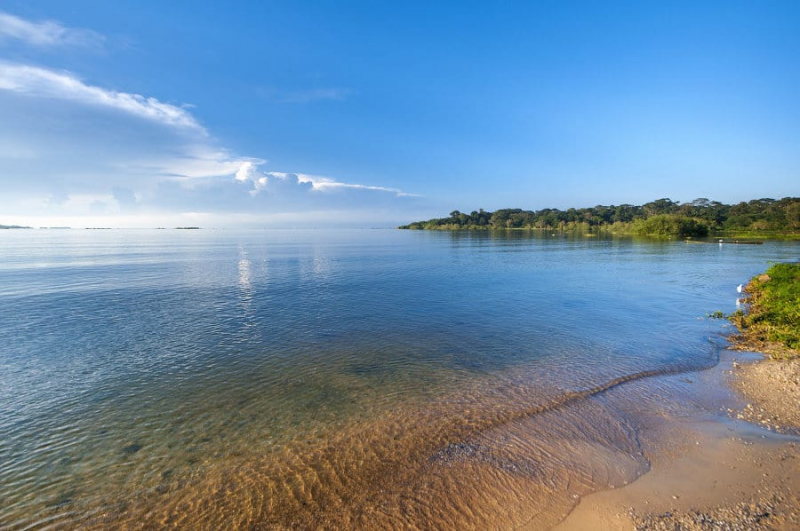
Photo: africafreak.com 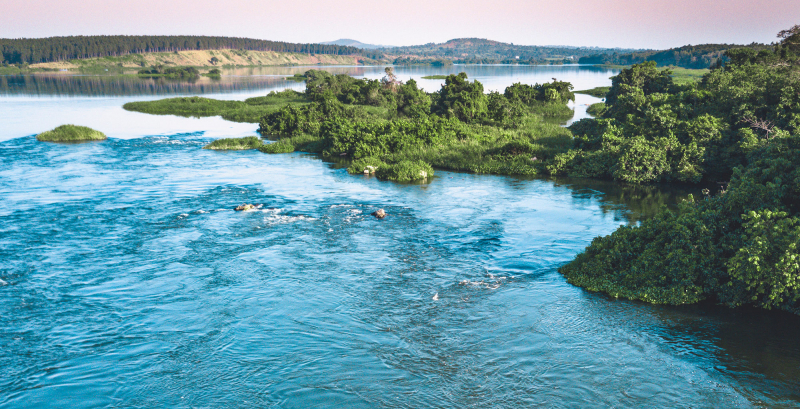
Photo: journeysbydesign.com -
An African Great Lake, Lake Malawi is the southernmost lake in the East African Rift System and is situated between Malawi, Mozambique, and Tanzania. It is also known as Lake Nyasa in Tanzania and Lago Niassa in Mozambique.
It is the third largest and second-deepest lake in Africa, the ninth largest lake in the world by area, and the fifth largest freshwater lake in the world by volume. More fish species, including at least 700 kinds of cichlids, may be found in Lake Malawi than in any other lake in the world. On June 10, 2011, the Mozambican government formally declared the lake's portion a reserve, whereas Lake Malawi National Park includes a piece of the lake in Malawi.
With its warm, turquoise water, it has a tropical appearance and is home to more fish species than any other lake on Earth. Here, locals catch fish to eat as well. Lake Malawi, like Lake Victoria, is a member of the African Great Lakes system and spans three nations: Tanzania, Mozambique, and Malawi. While it is known as Lago Niassa in Mozambique, it is known as Lake Nyasa in Tanzania. The lake is also quite old, with an estimated age of one to two million years.
Location: Malawi, Mozambique, Tanzania
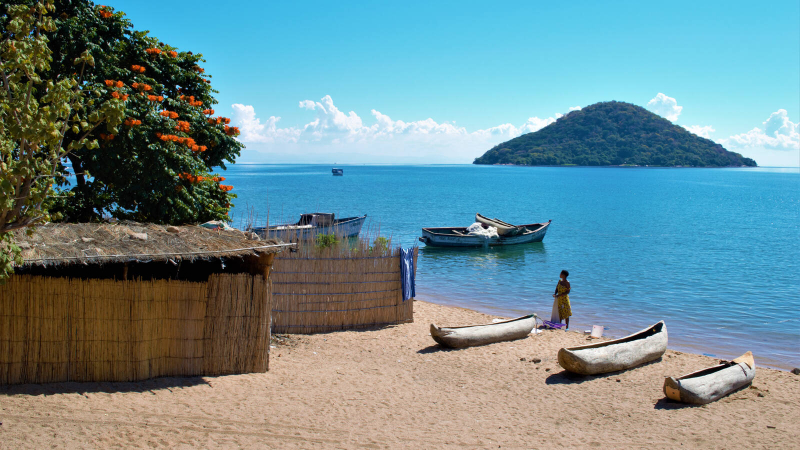
Photo: whc.unesco.org 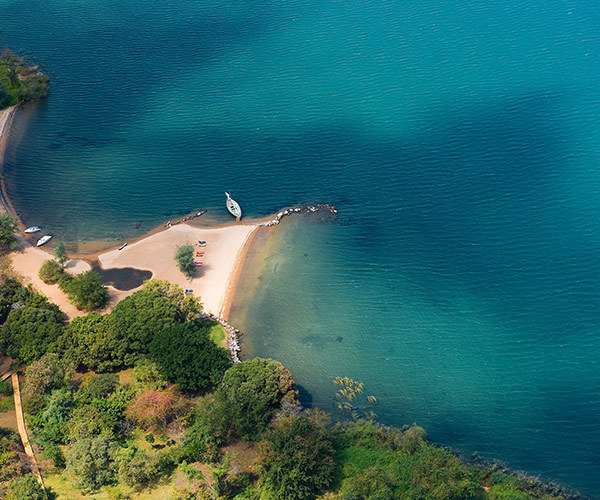
Photo: andreahugo.com -
An African Great Lake is Lake Tanganyika. After Lake Baikal in Siberia, it is the second-oldest, second-largest by volume, and second-deepest freshwater lake in the world. It is the longest freshwater lake in the world. Tanzania (46%) and the Democratic Republic of the Congo (DRC) (40%) own the majority of the lake, which is shared by four nations: Tanzania, Burundi, Zambia, and the DRC. It eventually drains into the Atlantic Ocean via the Congo River system.
Although not tidal, the fertile circulating surface water supports its residents with an abundance of plankton, which in turn supplies much-needed protein for both the local and export markets. The shallow water snail-borne parasitic disease bilharzia is prevented from spreading by the strong winds that come off the mountains in the area.
In Lake Tanganyika, there are more than 300 different species of fish, some of which are unique. The threatened Storm's water cobra, Nile crocodiles, and Zambian-hinged terrapins are among the animals that reside in this lake.
Location: Burundi, Democratic Republic of the Congo, Tanzania, Zambia
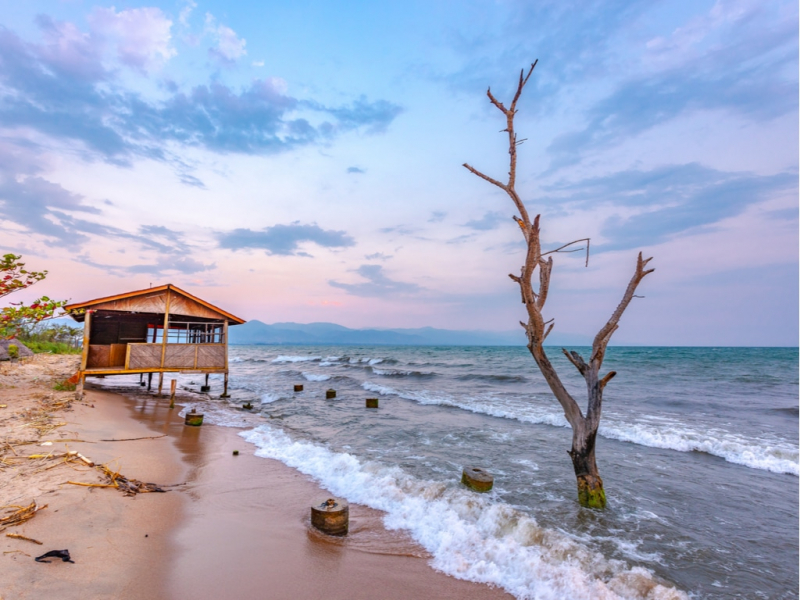
Photo: afrik21.africa 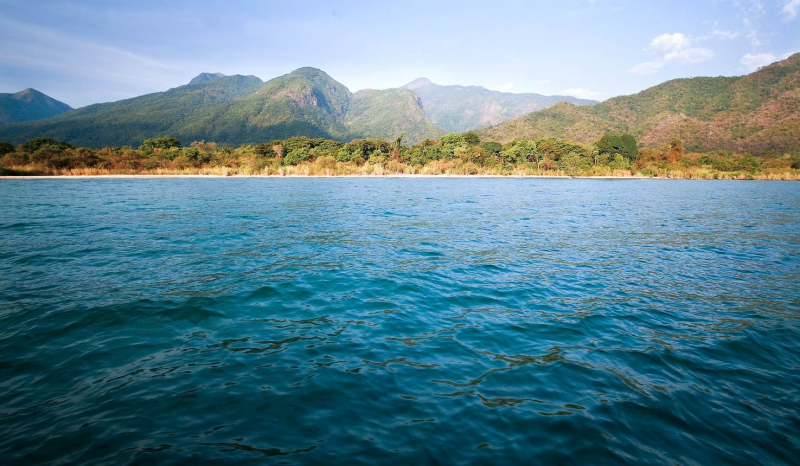
Photo: pinterest.com -
One of the Great Lakes of Africa is Lake Kivu. It is located in the Albertine Rift, the western arm of the East African Rift, and is the border between the Democratic Republic of the Congo and Rwanda. The Ruzizi River, which empties Lake Kivu, empties into Lake Tanganyika in the south. The most significant part of Lake Kivu is 50 km broad and 90 km long. Due to its asymmetrical structure, it is challenging to determine its exact surface area; however, it is estimated to have a total surface area of about 2,700 km2, ranking it as Africa's ninth largest lake.
Even though DR Congo comprises the majority of the lake, most tourists view it from the resorts along the Rwandan side. Gisenyi, a lakeside community, is nearby and offers beaches, lodging options, and recreational opportunities including sea kayaking and stand-up paddleboarding.
The hotel is surrounded by the Virunga Volcanoes and is situated on a sandy, palm-lined stretch of coastline, providing you with vistas in all directions. Additionally, the Congo Nile Trail begins at Gisenyi. It is a favorite among bikers and hikers and spans 225 kilometers along the lake's southeast edge.
Location: Rwanda and Democratic Republic of the Congo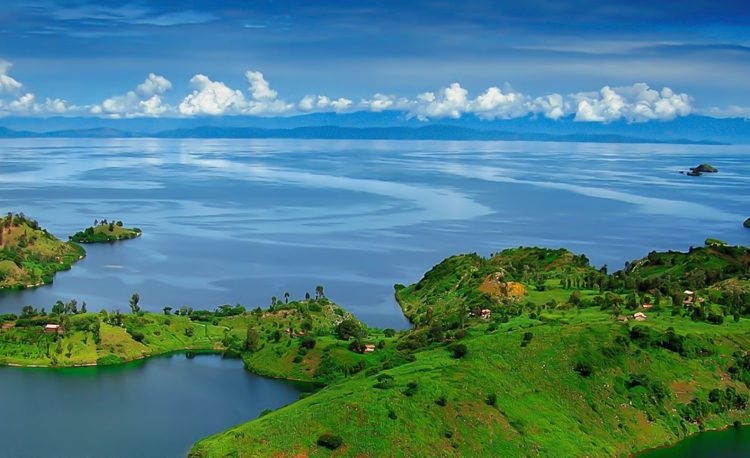
Photo: selectadventuresafari.com 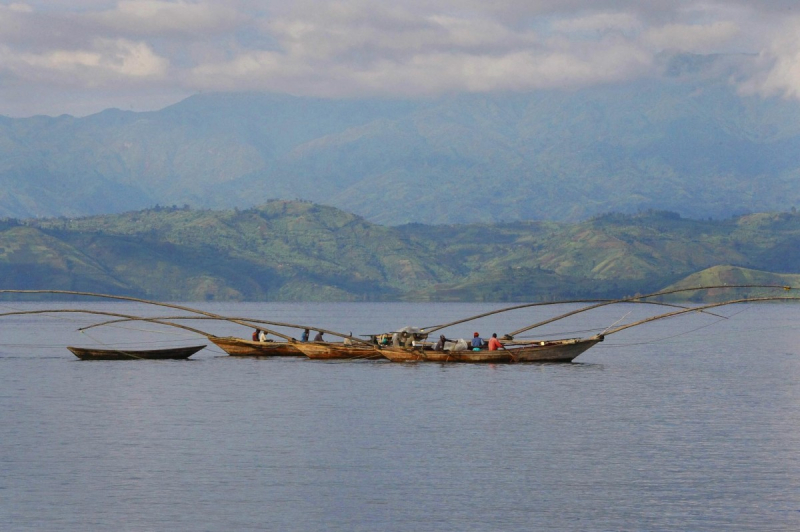
Photo: psmag.com -
The largest artificial lake and reservoir in terms of volume is Lake Kariba. It is located 1,300 kilometers from the Indian Ocean, near the Zambia-Zimbabwe border. Following the building of the Kariba Dam at its northern end, Lake Kariba was filled between 1958 and 1963, drowning the Kariba Gorge on the Zambezi River.
While some other settlements, such as Binga village and Mlibizi in Zimbabwe and Siavonga and Sinazongwe in Zambia, have grown up to house people displaced by the increasing waters, Kariba, a town in Zimbabwe, was established for construction workers on the lake's dam.
A houseboat vacation is a fantastic way to spend a few days in the sun, and the full moon is the ideal time to schedule one. The twilight hours between sunset and the full moon rising on this lake are truly spectacular. There are various lodging options, including well-known lodges on the banks with breathtaking views, self-catering chalets, and campsites.
Accommodations are available on both the Zambian and Zimbabwean sides. In order to explore more and enjoy breathtaking views of the sunrise and sunset over the river, many tourists also choose to hire houseboats. Tigerfish are the local species, and there is an annual Tiger Fishing Competition in May if you're there to go fishing.Location: Zimbabwe and Zambia
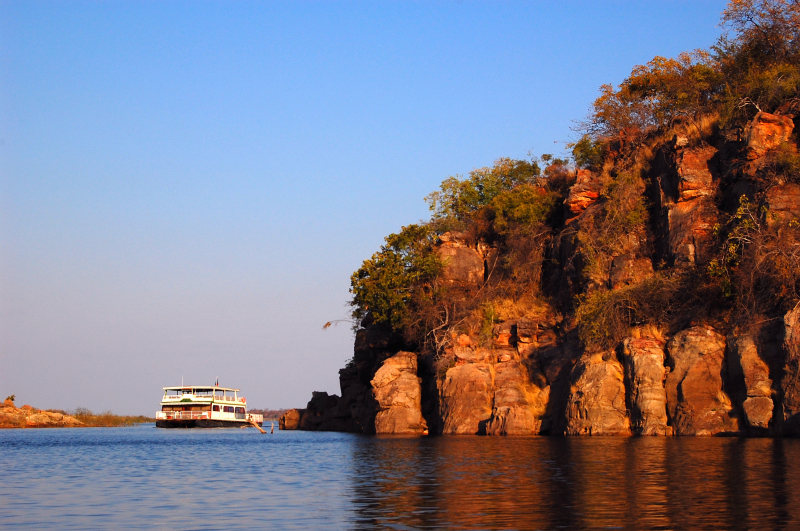
Photo: zambiatourism.com Video: https://www.youtube.com/watch?v=phb__TOHBsU -
The crater lake of Lake Assal is located in central-western Djibouti. Approximately 120 kilometers west of Djibouti city, it is situated at the western end of the Gulf of Tadjoura between the Arta and Tadjoura regions, touching the Dikhil regions. Lake Assal, a saltwater lake in the Afar Triangle, is the lowest place on land in Africa and ranks third-lowest on Earth after the Dead Sea and the Sea of Galilee. It is 155 meters below sea level.
One of Djibouti's top tourist destinations is a saltwater lake with salinity levels ten times higher than the ocean's. This makes it the largest salt reserve on the entire planet.
The Danakil Desert encircles Lake Assal, and the scenery is exceedingly lovely. The Afar people, who reside in the nearby settlements, also call the lake their home. Visitors will notice no wildlife in the area because of the harsh desert temperature and the highly salty water. Its hues range from a blinding white caused by the deposition of salt and sodium chloride crystals to the shore's turquoise and emerald green, the deepest seas' blue and light blue, with their gradually varying subtleties.
Location: Tadjourah Region, Djibouti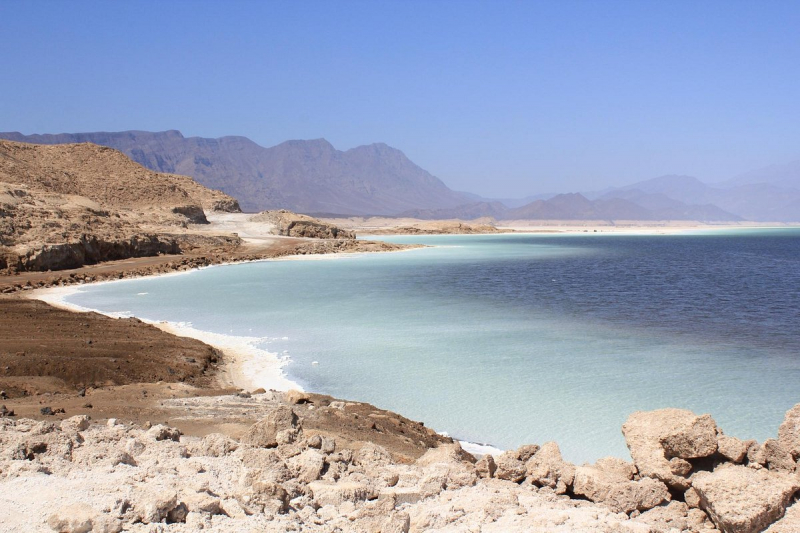
Photo: tripadvisor.com.vn 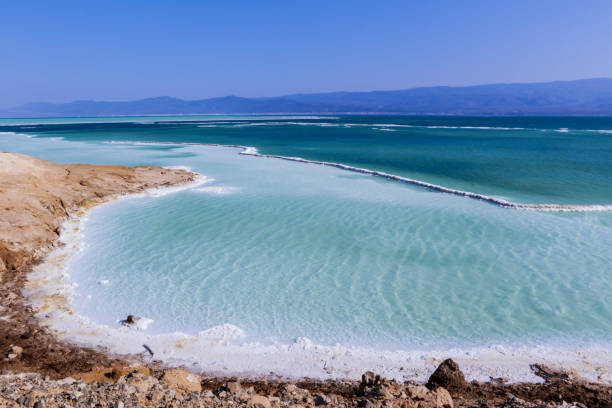
Photo: istockphoto.com -
A little north of the equator in Kenya, south of Lake Baringo, is a saline, alkaline lake known as Lake Bogoria. It is located in a volcanic zone. One of the greatest populations of lesser flamingos in the world occasionally resides in Lake Bogoria, along with Lake Nakuru, Lake Elementeita, and Lake Magadi in the Rift Valley to the south and Lake Logipi to the north.
Visitors interested in viewing pink flamingos should go to Lake Bogoria in Kenya's Rift Valley. This saltwater lake is exceptionally picturesque since it is home to one of the world's greatest populations of lesser flamingos.
It also boasts geysers and hot springs along its shoreline despite being in a volcanic area. Along with the flamingos, the geysers are a well-liked tourist attraction and can erupt up to 15 feet in the air. A protected national wetland reserve encompasses the entire lake.
There is a spa pool on the site that is heated by natural hot springs. Additionally, it features a spa on-site and luxury rooms and suites. There is additional camping along the southern shoreline. Lake Bogoria is one of the best lakes to visit in Africa.
Location: south of Lake Baringo, Kenya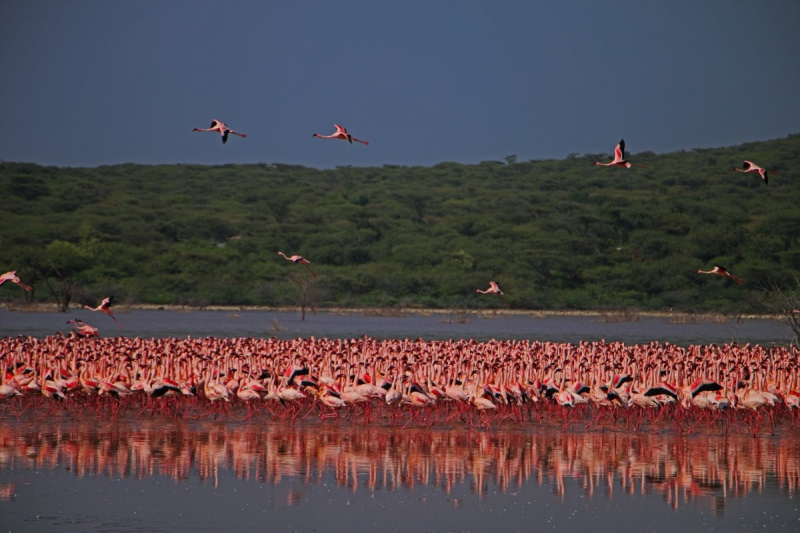
Photo: encloseafricasafaris.com 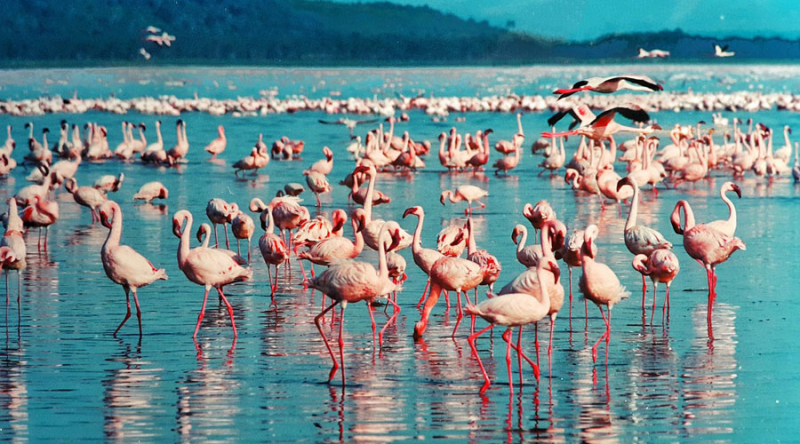
Photo: rhinowatchlodge.com -
With a salinity of about 40%, Lake Retba sometimes referred to as Pink Lake, is well renowned as one of the saltiest lakes in the world. An algae species common to salt lakes is what gives the water its pink hue. The lake is located 35 kilometers north of Dakar in the Rufisque Department of Senegal, close to the settlement of Sangalkam. The four divisions are Khar Yaala, Khoss, Virage, and Daradji.
It is a gorgeous lake with a pink tinge. Due to the lake's high salt content, a particular form of algae grows there and gives the water its hue. Visit the lake from November to June, when it's dry, to see it at its most pink.
Some areas of Lake Retba, like the Dead Sea, have salt concentrations up to 40%, making them floatable. Traditional Senegalese fishermen use pink lake salt to preserve their catch, but it is also exported to other close-by African nations like the Gambia, Guinea, Mali, and Benin. Because of the salt in this lake, the fish that live here are considerably smaller than typical fish.
Location: north of the Cap Vert peninsula of Senegal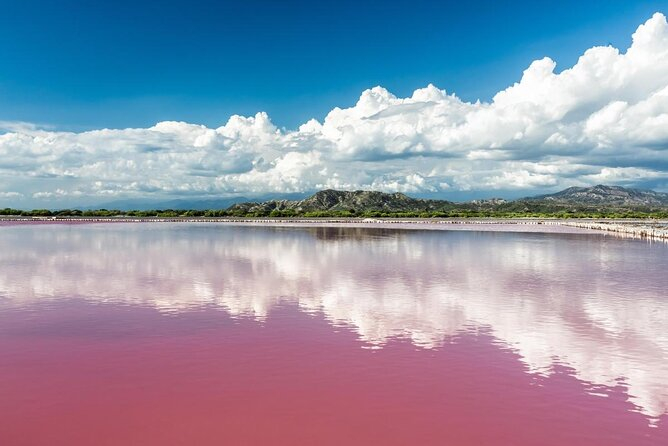
Photo: viator.com 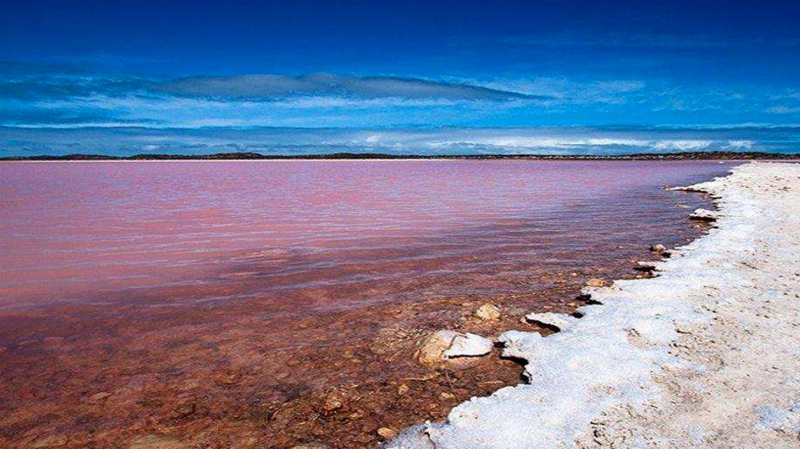
Photo: news.cgtn.com -
Originally called Lake Mwitanzige and briefly Lake Mobutu Sese Seko, Lake Albert is a lake that may be found in both Uganda and the Democratic Republic of the Congo. It is the second-largest of Uganda's Great Lakes and the seventh-largest lake in all of Africa. Numerous aquatic and semi-aquatic creatures, like hippopotamuses, Uganda kob antelopes, Nile crocodiles, Nile monitors, etc., can be found in Lake Albert.
Due to the steep mountains surrounding it, Lake Albert is more difficult to access than other African Great Lakes and doesn't draw many tourists. However, those who succeed in arriving here will be rewarded with a stunning sight. The White Nile River receives a significant amount of water from Uganda's second largest lake, which is also Africa's seventh largest lake.
Compared to other African lakes, Lake Albert is rather shallow, measuring only 80 feet deep. Wildlife and forest reserves guard its shoreline. There is also Murchison Falls National Park on the Ugandan side. The Victoria Nile River rushes through this small, rocky opening before plunging dramatically into a pool. Chimpanzees, hippos, and elephants are among the local wildlife.
Location: Uganda and the Democratic Republic of the Congo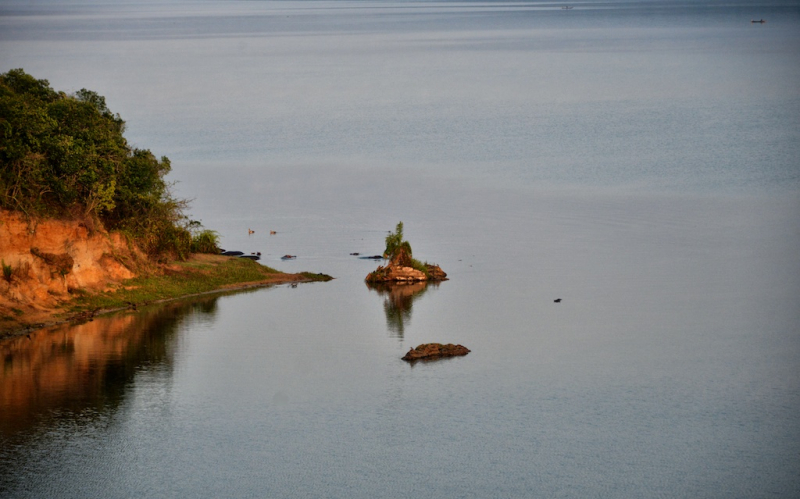
Photo: commons.wikimedia.org 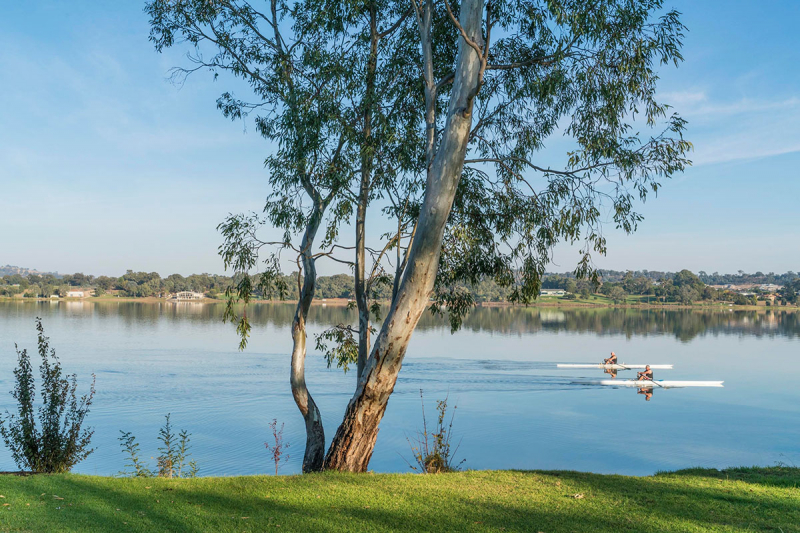
Photo: wagga.nsw.gov.au -
One of the best lakes to visit in Africa is Lake Chad. The freshwater lake is situated in West-central Africa's Sahelian region. It is located in the inner basin, which was once home to Mega Chad, a much larger ancient sea. According to historical records, the lake is one of the biggest in Africa. Both seasonally and annually, its surface area changes. The majority of Lake Chad is located in western Chad, close to Nigeria's northeastern border.
Over 90% of the lake's water comes from the Chari River and its tributary, the Logone, with the remaining 1% coming from the Yobe River in Nigeria/Niger. The deepest point of Lake Chad is only 30 feet deep, making it an extremely shallow lake. It still has the most surface area of any lake in northern Africa and shares borders with Nigeria, Niger, Chad, and Cameroon.
The Sahara Desert encircles Lake Chad, providing a haven for a variety of creatures. It is well-liked by bird watchers, and the best time to go is from August to December when it rains a lot and the water level is at its greatest.
Location: Chad, Cameroon, Nigeria, and Niger
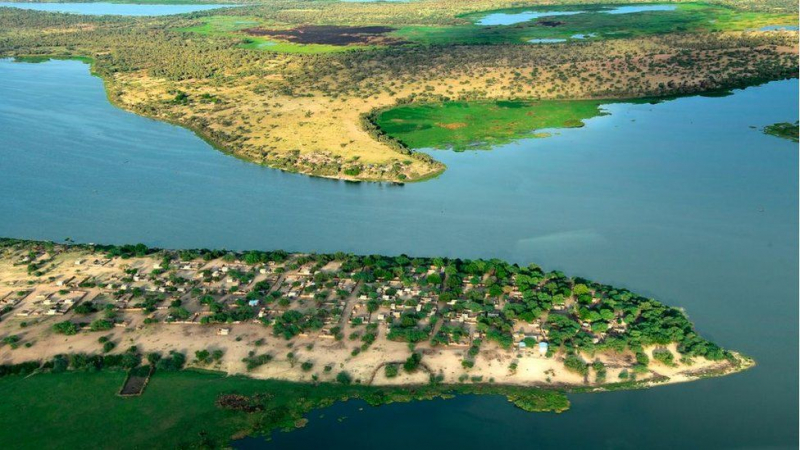
Photo: bbc.com Video: https://www.youtube.com/watch?v=4ipOtuXH3QA -
One of the lakes in the Rift Valley, Lake Nakuru is located 1,754 meters above sea level. It is protected by Lake Nakuru National Park and is located in Kenya's rift valley to the south of Nakuru. The lake's profusion of algae used to draw a large number of flamingos, who were known to line the coast. Along with warthogs, baboons, and other large mammals, other birds and large mammals also thrive there. Additionally, southern white rhinos and eastern black rhinos have been introduced.
Because of the birds and other wonderful aspects of the park, Lake Nakuru National Park has become one of the most frequently visited parks in Kenya over the years. Visitors to Lake Nakuru Park can enjoy a variety of activities, including bird watching, game viewing, camping, picnicking, and more on the park's stunning rocky vantage points.
While most visitors to Lake Nakuru do so as part of an organized safari that typically also covers neighboring parks, there are campgrounds on the lake's beaches if you want to travel independently. Numerous other bird species, including the African fish eagle, Goliath heron, hamerkop, pied kingfisher, and Verreaux's eagle among others of its kind, live in the lake and the area around it in addition to flamingos.
Location: south of Nakuru, Kenya
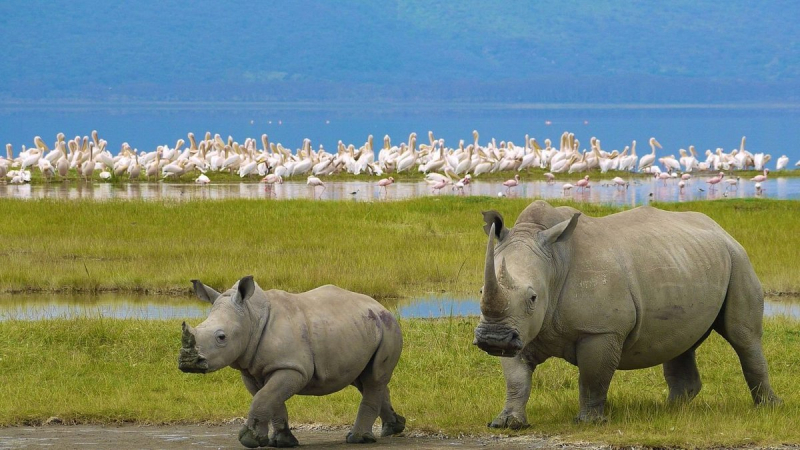
Photo: tripadvisor.com.vn 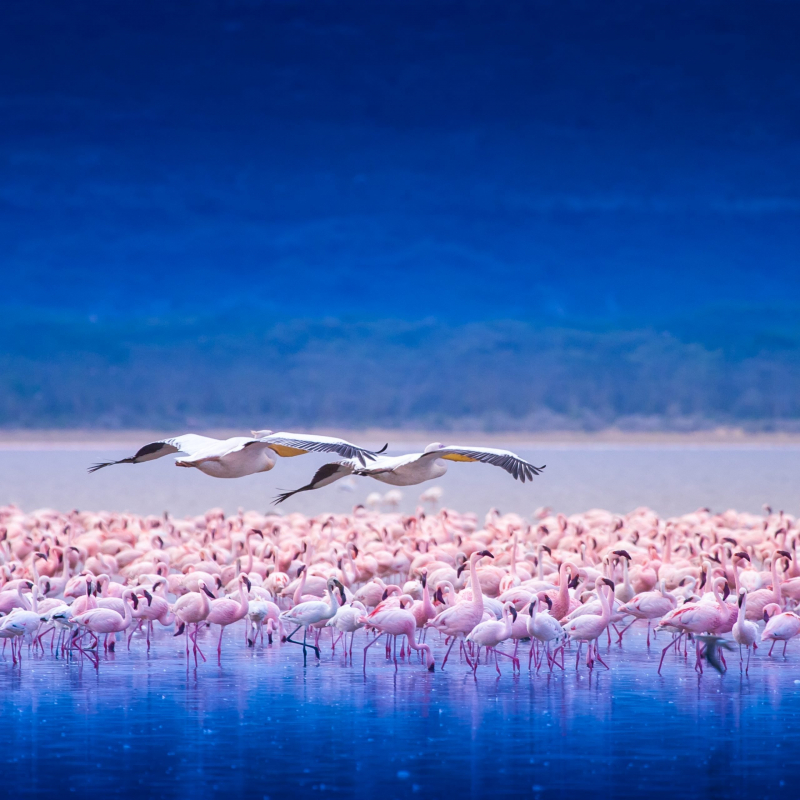
Photo: hoaexp.com -
A lake in the Kenyan Rift Valley in northern Kenya with its far northern end crossing into Ethiopia is called Lake Turkana, originally known as Lake Rudolf. It is both the largest alkaline lake and the largest permanent desert lake in the world. After the Caspian Sea, Lake Issyk-Kul, and Lake Van in terms of volume (passing the dwindling South Aral Sea), it is the fourth-largest salt lake in the world and ranks 24th among all lakes.
The mist rising from the volcano within Lake Turkana, which is active, has made it one of the most well-known national parks in Kenya. It is surrounded by the Sibiloi National Park, which is also a UNESCO World Heritage Site.
Hippos and Nile crocodiles are only two of the many creatures that call the national parks home. Lake Turkana is home to hundreds of bird species that are unique to Kenya, making it a bird delight. Additionally, keep a look out for the lake-native Turkana mud turtle.
Location: Northwest Kenya and stick with Southwest Ethiopia
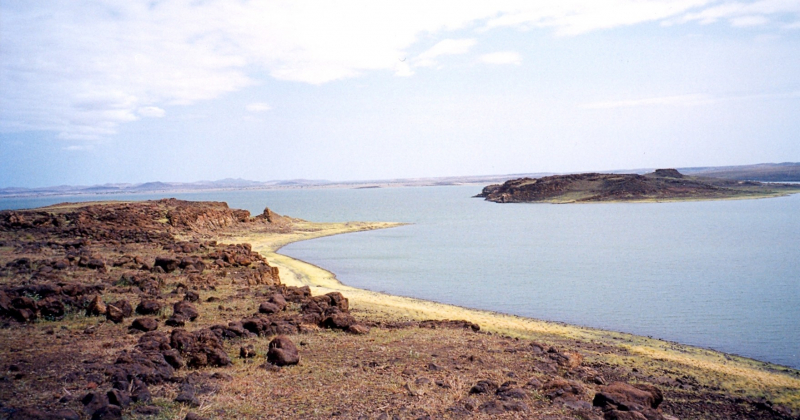
Photo: Wikipedia 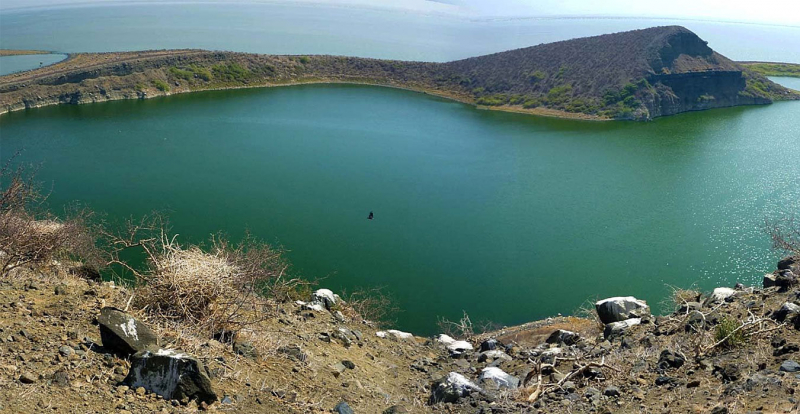
Photo: kyluc.vn -
One of the best lakes to visit in Africa is Lake Sibaya. A 64 km2 freshwater lake in South Africa, Lake Sibaya is also referred to as Lake Sibhayi. On South Africa's east coast, in the Maputaland or Umhlabuyalingana region of KwaZulu-Natal, is where the lake is situated.
It is a part of the Greater St. Lucia Wetland Park and was designated a "Wetland of International Importance" by the Ramsar Convention on June 28, 1991. The Greater St. Lucia Wetland Park was renamed the iSimangaliso Wetland Park in 2009 after being designated a UNESCO World Heritage Site in December 1999.
The hippos are its most famous inhabitants, and many tourists will encounter them while on a guided kayaking excursion or a sunset cruise. Crocs and an abundance of birds also reside in the lake. There are 18 different species of fish if fishing adventures interest you. This lake is perfect for frog lovers because it is home to 22 different species, including toads, reed frogs, and grass frogs.
Location: KwaZulu-Natal, South Africa
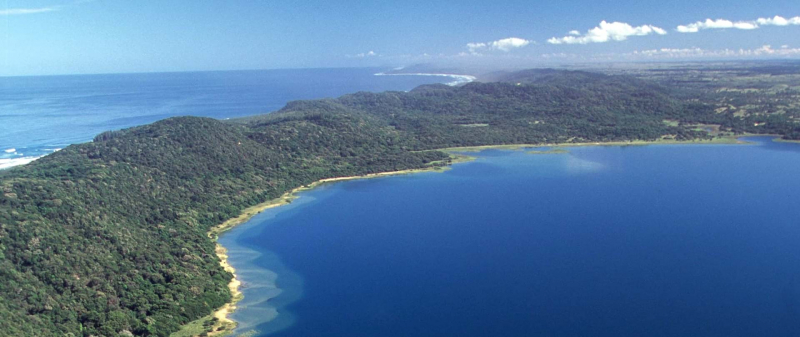
Photo: southafrica.net 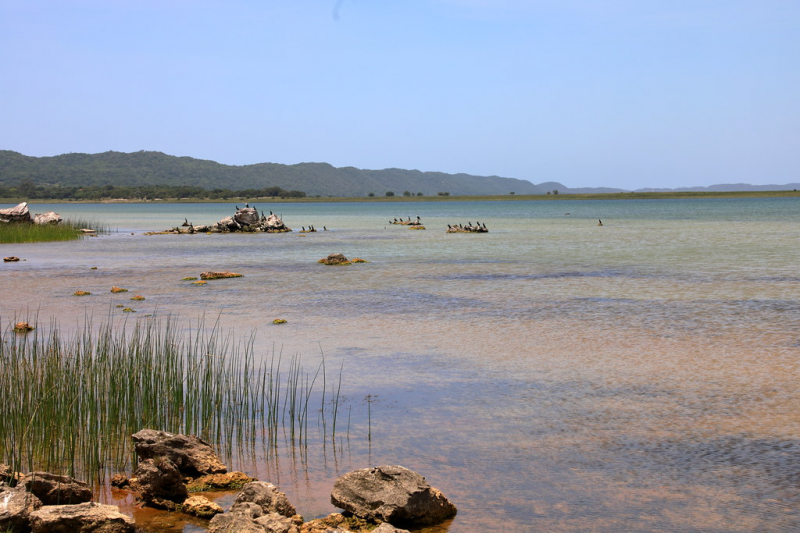
Photo: flickr.com















